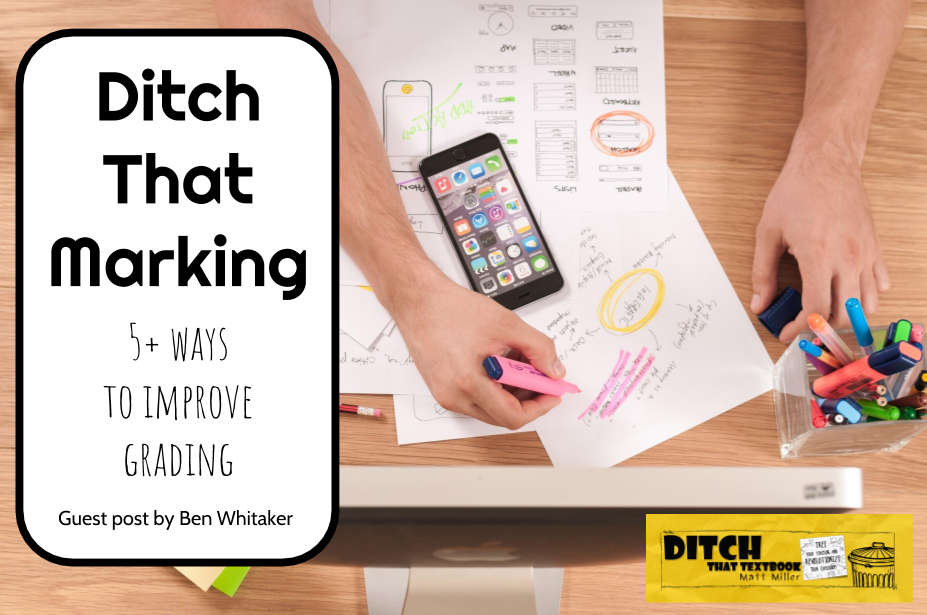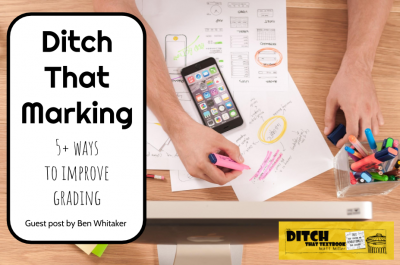
I had a pile of assessments to mark (grade). I knew was going to take the best part of four hours to get done.

Marking (grading) can eat up hours of your day as a teacher. However, rethinking how we provide feedback can keep it from owning you. (Public domain photo via William Iven on Unsplash.)
I seemed to be writing the same comments as feedback: “Use a quotation to support your argument.” “Include a religious view as an alternative.” (I am a religious studies teacher if you didn’t know!) “Take care with the spelling of …”.
It got to me. Made me realise that in writing the same comments, I was wasting time I could spend on meaningful feedback.
With many things — marking (grading) included — we are convinced of the way things must be done.
(For instance, when was it ever conceivable that teachers wouldn’t need textbooks as their font of knowledge or that homework as a concept would become unnecessary in its traditional forms?)
Sometimes, we revisit those ideas and realise they are, in fact, worth changing.
As shown in the change theory model to the right, Lewin suggests that change is almost always identical in its theoretical system.
What I am proposing in this article is that we need to Ditch that Marking (Grading) and will need to ensure we reach the stage where we reinforce the change through norms.
Marking may well be something that Miller will address in a future publication, but as yet, I haven’t seen anything about this, although it is intimated in many guises. (Note from Matt: Nothing planned, but this topic fascinates me — hence the guest blog post!)
A 2016 study suggests that 17% of teachers in the United Kingdom (9 percent of United States teachers) are spending 11 hours or more per week on marking. And I think that is probably conservative as a statistic.
Plus, more than two thirds of U.K. teachers report that the amount of time they spend marking (grading) negatively affects classroom time with students.
I decided to Ditch That Marking. Well … not quite. But I certainly ditched the way I had always done it. I asked myself the question: Why do I mark? And it gave me several answers:
 I even used a variety of colours of pens:
I even used a variety of colours of pens:
At my daughter’s school they have a range of highlighters that teachers use – my personal favourite is the Yellow Highlighter of Doom (that’s what they call it!!!). This is on top of a rainbow-full of pens/highlighters and stickers.
Going back to why … I felt if I’m honest that #5 (to follow school policy) was the primary reason when it should’ve been the previous four.
If I was marking to jump through hoops, I needed ways to do what needed doing and then find a path to using marking to improve performance.
So, has this reduced my marking load? Yes in some ways, but the next phase in my less-marking-world is split into 5 key suggestions, all of which are currently works in progress for me:
Marking as a discipline isn’t going away – and I don’t think it should. However, we do as educators need to keep looking at becoming more effective and efficient in this field so we don’t waste time. We don’t have enough of it as it is…
Please spread the love with this infographic.
Peace.
For notifications of new Ditch That Textbook content and helpful links:
Interested in having Matt present at your event or school? Contact him by e-mail!
Matt is scheduled to present at the following upcoming events:
[getnoticed-event-table scope=”upcoming” max=”15″ expanding=”false”]
Session expired
Please log in again. The login page will open in a new tab. After logging in you can close it and return to this page.